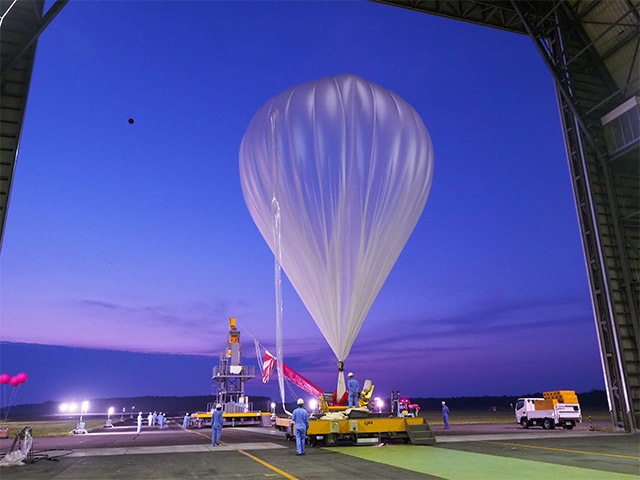About Scientific Ballooning
|
Like satellites and rockets, scientific balloons provide opportunities for scientific observations and space engineering demonstrations. A helium-gas-filled balloon made of thin polyethylene film can float a payload into the stratosphere. Because of the loose restrictions on the size and weight of the payload, many challenging experiments with state-of-the-art equipment have been conducted. Recovered equipment can be upgraded for subsequent flight opportunities to obtain further scientific achievements. Scientific balloons brought up both scientists and equipment pioneering new space science. |

|
|---|
In order to fly heavier payloads at higher altitudes for longer durations, a new generation of balloons has been developed. Super-pressure balloons will enable us to achieve ultra-long duration flights up to several months, and ultra-thin high-altitude balloons enable scientific observation in the mesosphere. Since its first manned flight 200 years ago, balloons are still developing at the frontier of space exploration.
Project Topics
indexB17-04 Scientific Balloon Testing

|
On June 24, 2017, at 3:33 a.m. JAXA launched B17-04, the second of the first series of Japanese fiscal 2017 balloon tests. When fully deployed, a 5,000-cubic-meter aerostatic balloon extends a 23-meter diameter. Built with new load tapes*, B17-04 was released from the Taiki Aerospace Research Field and ascended at 330 meters/m. JAXA is granted use of the Taiki Aerospace Research Field based on JAXA—Taiki-cho collaboration initiative. Hour and a half after the launch, B17-04 reached the float a... |
|---|
Characteristics of Scientific Ballooning
Development of next generation balloons
|
Since balloons ascending to high altitude need to be extremely light, these balloons are made of a specially developed ultra-thin polyethylene film. A new world record of the highest unmanned balloon altitude of 53 km was established in 2003 by a 3.4 μm-thick balloon. Now such balloons are utilized for ozone observations in the mesosphere. |

|
|---|
Mission talk by team leaders

|
Project Manager Tetsuya YoshidaHere are messages from Project Managers. |
|---|
Contents

- Nov. 26, 2008
- A New World of Scientific Balloons
Tetsuya Yoshida
Pamphlet
- Scientific Balloon
 (2.08MB)
(2.08MB)